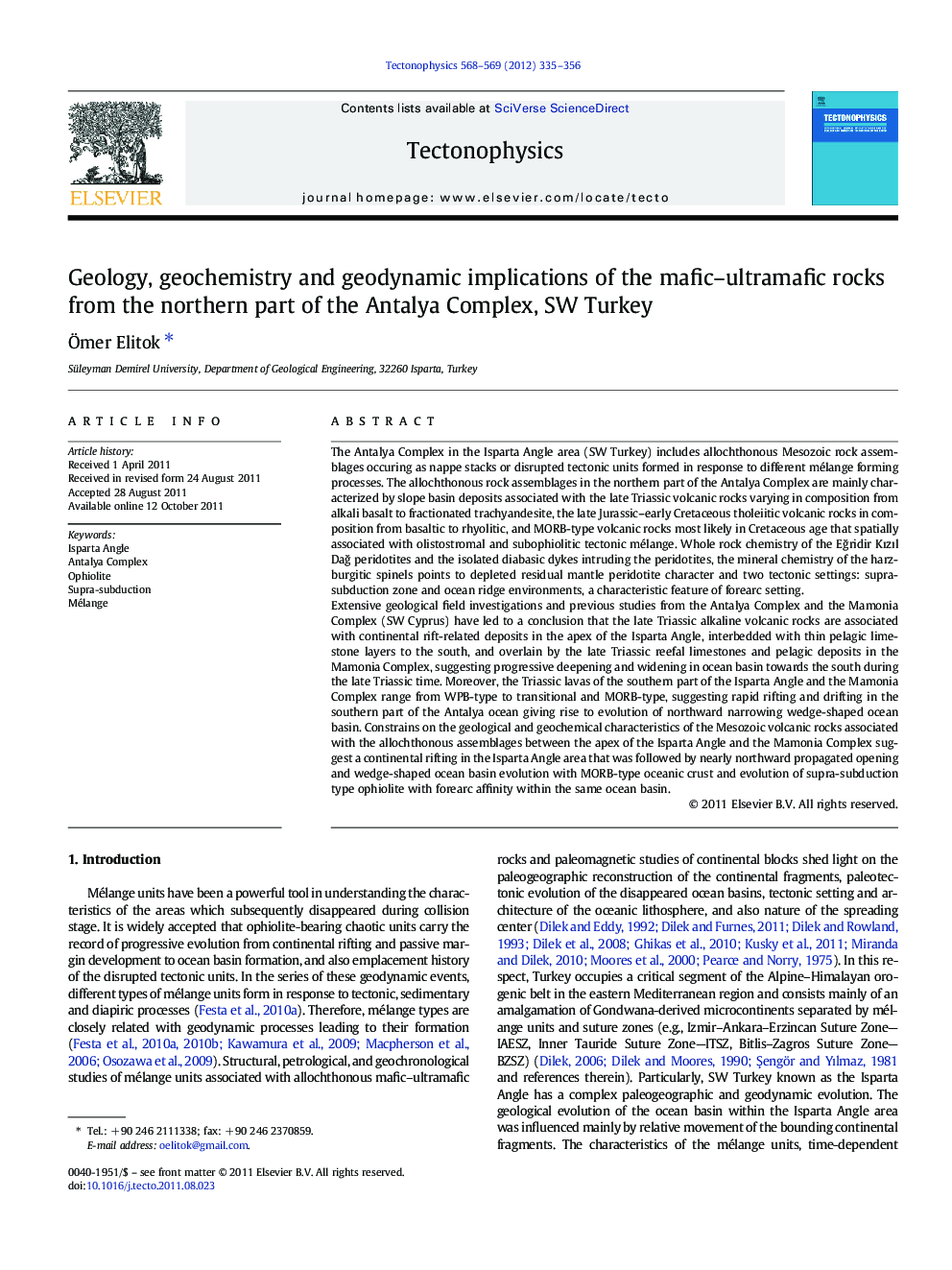| کد مقاله | کد نشریه | سال انتشار | مقاله انگلیسی | نسخه تمام متن |
|---|---|---|---|---|
| 4692740 | 1636812 | 2012 | 22 صفحه PDF | دانلود رایگان |

The Antalya Complex in the Isparta Angle area (SW Turkey) includes allochthonous Mesozoic rock assemblages occuring as nappe stacks or disrupted tectonic units formed in response to different mélange forming processes. The allochthonous rock assemblages in the northern part of the Antalya Complex are mainly characterized by slope basin deposits associated with the late Triassic volcanic rocks varying in composition from alkali basalt to fractionated trachyandesite, the late Jurassic–early Cretaceous tholeiitic volcanic rocks in composition from basaltic to rhyolitic, and MORB-type volcanic rocks most likely in Cretaceous age that spatially associated with olistostromal and subophiolitic tectonic mélange. Whole rock chemistry of the Eğridir Kızıl Dağ peridotites and the isolated diabasic dykes intruding the peridotites, the mineral chemistry of the harzburgitic spinels points to depleted residual mantle peridotite character and two tectonic settings: supra-subduction zone and ocean ridge environments, a characteristic feature of forearc setting.Extensive geological field investigations and previous studies from the Antalya Complex and the Mamonia Complex (SW Cyprus) have led to a conclusion that the late Triassic alkaline volcanic rocks are associated with continental rift-related deposits in the apex of the Isparta Angle, interbedded with thin pelagic limestone layers to the south, and overlain by the late Triassic reefal limestones and pelagic deposits in the Mamonia Complex, suggesting progressive deepening and widening in ocean basin towards the south during the late Triassic time. Moreover, the Triassic lavas of the southern part of the Isparta Angle and the Mamonia Complex range from WPB-type to transitional and MORB-type, suggesting rapid rifting and drifting in the southern part of the Antalya ocean giving rise to evolution of northward narrowing wedge-shaped ocean basin. Constrains on the geological and geochemical characteristics of the Mesozoic volcanic rocks associated with the allochthonous assemblages between the apex of the Isparta Angle and the Mamonia Complex suggest a continental rifting in the Isparta Angle area that was followed by nearly northward propagated opening and wedge-shaped ocean basin evolution with MORB-type oceanic crust and evolution of supra-subduction type ophiolite with forearc affinity within the same ocean basin.
Journal: Tectonophysics - Volumes 568–569, 28 September 2012, Pages 335–356